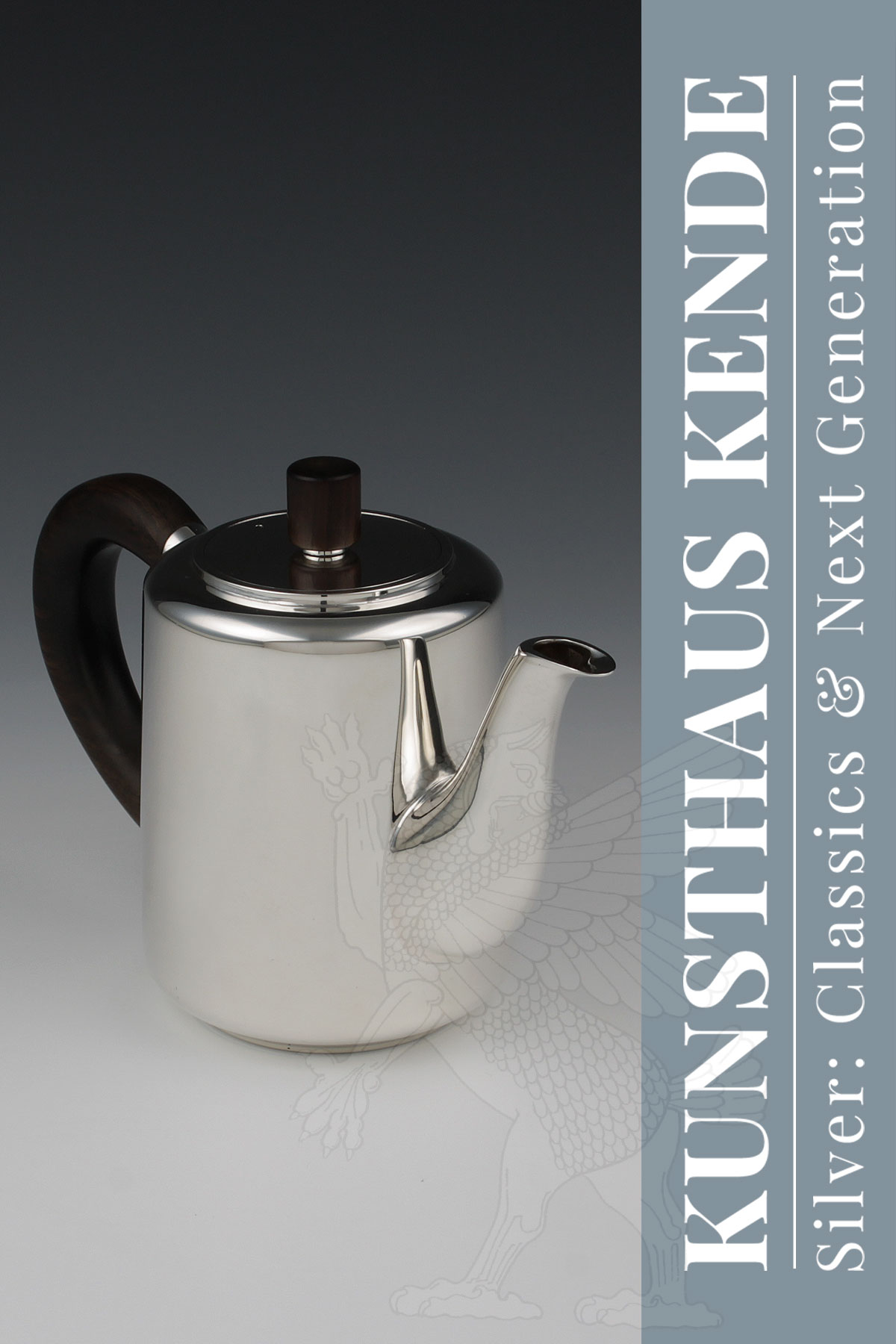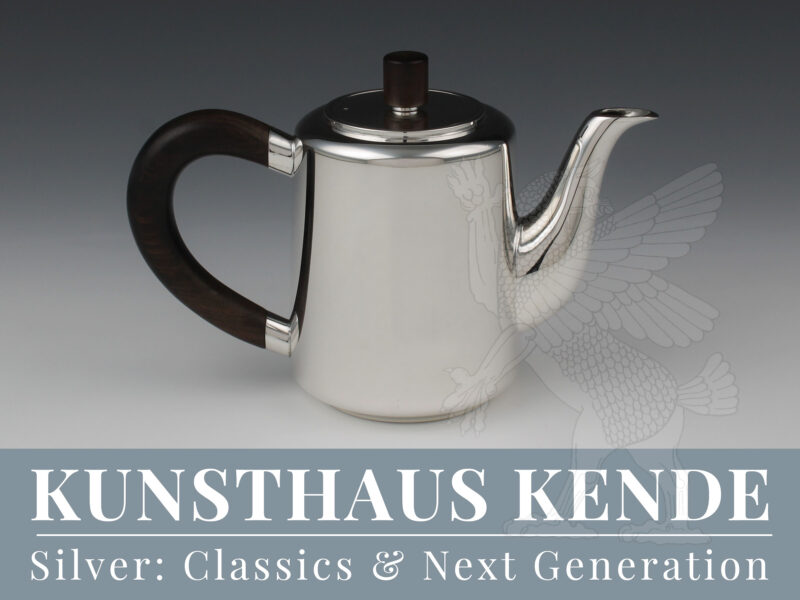Item number: 59072
A modernist sterling silver mocha pot or coffee pot,
Hamburg circa 1975 by Wilfried Moll
Circular form with smooth walls, subtly rounded towards the base and merging over the correspondingly rounded shoulder into the lid, which is closed by a cylindrical knob. The ergonomic handle on the back is made of african ironwood, analogous to the knob of the lid.
An elegant teapot in masterly execution and excellent condition. This teapot as well as the coffee or mocha pot we currently also offer are illustrated on p. 46 under the chapter “one-off pieces” in: Weber-Stöber, Christianne et al: MOLL. SILVER + GOLD, Stuttgart 2011.
8.0 cm / 3.14″ diameter, 12.3 cm / 4.84″ height (to knob), 10.5 cm / 4.13″ height (top rim); 469.6 g / 15.09 oz
Approx. 0.48 ltr. capacity
Wilfried Moll (Hamburg 1940 – 2020 Travemünde)
As a silversmith and designer, one of Germany’s most influential and important artists of the post-war period. Born the grandson of a Danish man, Wilfried Moll had special ties to his neighbouring country, which is why, after completing his apprenticeship as a goldsmith under Walter Franke in Hamburg (1956 – 1959), he spent his journeyman years in Copenhagen until 1961. He then became a master student under Andreas Moritz at the Academy of Fine Arts in Nuremberg. He then returned to Hamburg where he established a workshop with his wife Gerda in 1965. The young silversmith soon became the focus of public attention. The first awards for his work followed, such as the Justus Brinckmann Prize (1971), awards from the Hamburg Chamber of Crafts (1973) and the Hamburg Department of Culture (1978), as well as the Design-plus Prize (Frankfurt a. M. 1984). In the early 1980s Wilfried Moll reached a fundamental stage in his career: the Flensburg-based silversmithy Robbe & Berking became aware of him and acquired from him the “Alta” and “Riva” cutlery pattern series, developed over many years, and later the “Sphinx” and “Atlantic” pattern cutlery. Designs for silverware such as candelabras, teapots, tea services and trays followed. The cutlery earned both Robbe & Berking and Wilfried Moll international renown, and many restaurants in the luxury segment used these pattern for their tables. At the same time, Wilfried Moll was invited to give courses in Kobe and Osaka (Japan). Further prizes and awards follow, including the Bayrischer Staatspreis (Bavarian State Prize,1987) and the “Year’s Cutlery” award from the Netherlands (1991). In Denmark, too, he is held in high esteem as a corresponding member in the community of silversmiths and designers, and in 2003, as one of the few non-Danes, he was awarded the Karl Gustav Hansen Prize. Today, the following museums, among others, keep works by Wilfried Moll: Museum für Kunst und Gewerbe (Hamburg), Kunstgewerbemuseum (Berlin), Germanisches Nationalmuseum (Nuremberg), Koldinghus (Kolding/Denmark), Victoria & Albert Museum London (Great Britain) and The Museum of Modern Art, MoMA (New York).
The artistic uniqueness of Wilfried Molls’ silverware
Wilfried Molls’ silverware is the almost perfect symbiosis of extreme reduction to the perfect form, devoid of any ornamental decoration. At the same time, like only few designers, he manages to subordinate the restrained design to the ergonomic requirements of practicality and to perfect it without making the work look sterile. Under the silversmith Andreas Moritz, he refined his skills to the highest precision in craftsmanship without adapting the latter’s ascetic austerity in shape. Artistically, the silversmiths Wolfgang Tümpel and Karl-Gustav Hansen, both of which he had a long-standing friendship, as well as the works of Georg Jensen and Kai Bojesen had a greater influence. Of further importance for Wilfried Moll’s oeuvre are the works of the Bauhaus, reduced to the stereometric basic elements – cuboid, sphere, cone – as well as the works of Japanese silversmiths whose works he became acquainted with on his courses.



![[:en]Greif Kunsthaus Kende[:]](https://kunsthaus-kende.de/wp-content/uploads/greif_kunsthaus-kende-238x300.png)

